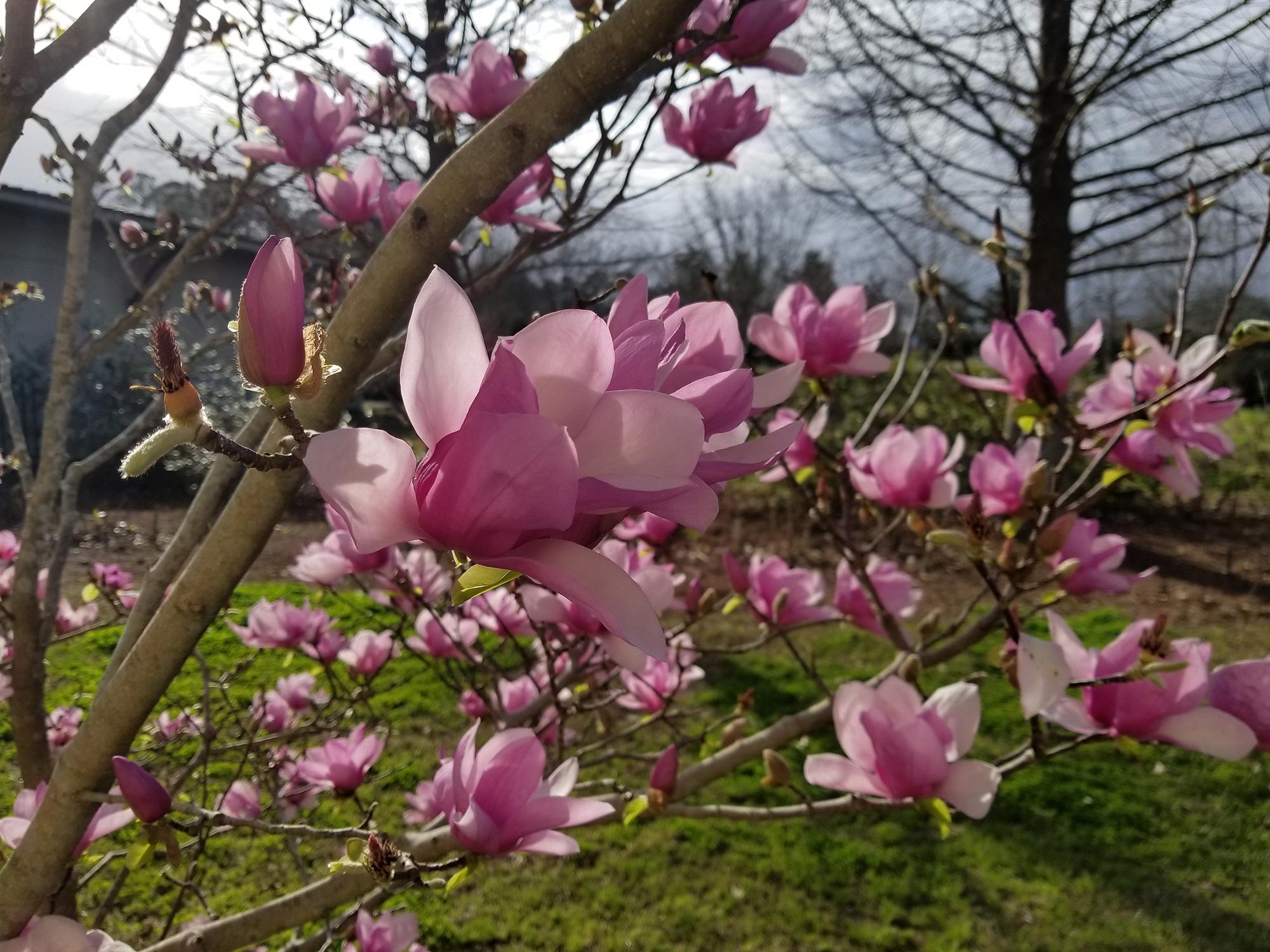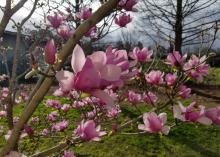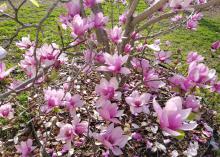Information Possibly Outdated
The information presented on this page was originally released on February 19, 2018. It may not be outdated, but please search our site for more current information. If you plan to quote or reference this information in a publication, please check with the Extension specialist or author before proceeding.
Spring blooms herald early arrival of spring
I came to a conclusion after a series of events reminded me that spring is really close.
Driving around, I noticed the Southern red maples are flowering and leafing out with gusto. These sights didn’t surprise me, as these trees normally do this around Valentine’s Day. Then I saw a few early pear trees flowering as white clouds in the distance.
This morning as I drove to work at the Mississippi State University Coastal Research and Extension Center, I saw yellow jessamine starting its golden yellow scrambling through the trees and trailing on fences. And how can I forget seeing the clouds of pollen blowing out of the pine trees in such prodigious amounts that I was leaving footprints?
Stay with me for the bold announcement at the end of this column. But my favorite harbinger of spring is saucer magnolia.
The saucer magnolia, is a cross between the white-flowered Magnolia denudata and the purple-flowered Magnolia liliiflora, dates back to the 1820s. I find it interesting that saucer magnolia was created to repair damage and bring beauty back to the landscape after the Napoleonic Wars.
In most landscapes, saucer magnolia is a small tree. It tolerates pruning and can be trained easily to a broad, multistem architecture. If it starts to get out of hand, prune to control its size. The best time to prune this spring-flowering tree is immediately after flowering.
But I really like specimens that are allowed to grow to their natural potential. Unpruned specimens in old, established landscapes are commonly 30 to 40 feet tall.
Since the trees bloom before the leaves emerge, the flowers are the main attraction. They are huge -- up to 10 inches across. The colors can be white, pink or bold purple, depending on the variety.
Extensive breeding through the years has developed many selections and cultivars from which to choose. Deciding on only one can be difficult. Leaves vary depending on the selection and have an elliptical shape, reaching up to 8 inches long. They add textural interest to the summer landscape but have little fall color interest.
Saucer magnolias are a good, low-maintenance plant with few serious disease or pest problems.
Plant them in full sun in well-drained soil; a raised bed is perfect for them. To make sure the soil doesn’t dry out completely, consider using drip irrigation. Your saucer magnolia will drop its leaves prematurely if allowed to dry out. Flower buds don’t develop as well during drought conditions either, so water saucer magnolias deeply a few times during drought stress to help ensure a beautiful spring next year.
The blooms of saucer magnolia can make your early-spring or late-winter garden resemble a painting. I like to think of the saucer magnolia flowering as an early spring extension, since they start blooming before our beloved Southern indica azaleas.
And now for my bold announcement: We are still a few weeks away from our traditional frost date, and the possibility of a little cold weather remains, but I think I’ve made the case to officially declare spring has sprung! So, get out there and enjoy gardening again. Make your 2018 landscape beautiful.





